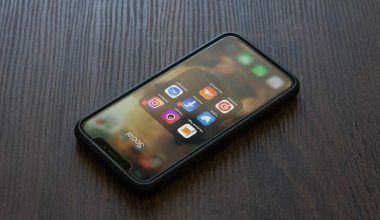If you’re selling products, either online or in physical stores, you’ve probably heard the term UPC code. But what exactly is a UPC code, and how can you get one? Don’t worry—this guide will walk you through everything you need to know about how to get a UPC code. Let’s make the process as simple and stress-free as possible.
What Is a UPC Code and Why Do You Need One?
A UPC, or Universal Product Code, is a type of barcode used to identify products in retail stores. It’s the black-and-white striped image you often see on product packaging. UPC codes make it easy for businesses to track inventory, speed up the checkout process, and maintain accurate sales records.
If you’re an entrepreneur, having a UPC code can help you get your products on store shelves or listed on major online marketplaces like Amazon. Simply put, a UPC code acts as your product’s fingerprint—unique and essential.
Step 1: Understand the Basics of UPC Codes
Before diving into how to get a UPC code, it’s important to understand what goes into one. A UPC code has two main parts:
- The Barcode: This is the scannable image seen on products.
- The Number: Beneath the barcode is a 12-digit number, which is just as important as the barcode itself.
Both components work together to provide product-specific information. The barcode is what gets scanned, while the number represents your product in a database.
Step 2: Decide if You Need a UPC Code
Not every business needs a UPC code, but if you’re selling physical products in retail stores or online, chances are you do. Major retailers, such as Walmart or Target, require all products to have UPC codes. Similarly, e-commerce platforms like Amazon often request a UPC for listing products.
If you’re running a small business and selling locally, UPC codes might not be necessary. However, as you scale, they become more important.
Step 3: Register with GS1
The only official way to get a UPC code is through GS1 (Global Standards 1). GS1 is the organization responsible for maintaining global barcode standards.
Here’s how you can register:
- Visit the GS1 Website: Start by going to the official GS1 website for your region.
- Create an Account: Fill out some basic information about your business.
- Purchase a Prefix: The prefix is the unique identifier that represents your company.
- Assign Codes to Your Products: Once you have a prefix, you can create individual UPC codes for each of your products.
This process ensures your UPC codes are legitimate and globally recognized.
Step 4: Calculate the Costs
Getting a UPC code isn’t free, so it’s important to understand the costs upfront. GS1 charges a one-time registration fee as well as an annual renewal fee. The cost depends on the number of products you need UPC codes for.
Here’s a rough breakdown:
- Small businesses might pay a lower fee for fewer products.
- Larger companies may pay more if they have a broad product line.
If you’re just starting out, consider how many products you plan to sell now and in the near future.
Step 5: Generate UPC Codes
After registering with GS1 and obtaining your prefix, you can start generating UPC codes for your products. Each code is unique to a specific product or variation. For example, if you’re selling a T-shirt in three colors, you’ll need a separate UPC code for each color.
This ensures accurate tracking and prevents confusion in inventory systems.
Step 6: Add UPC Codes to Your Products
Once you have your UPC codes, the next step is to add them to your product packaging. Many companies choose to print their UPC codes directly onto labels, boxes, or tags.
You can use barcode printing software or work with a professional printing service. Just make sure the barcode is clear and easy to scan.
Step 7: Test Your Barcodes
Before sending your products to retailers, it’s a good idea to test your UPC codes. A simple scanner can confirm that your codes are functional and correspond to the right product.
This step might seem small, but it can save you a lot of trouble later on.
Alternatives to Getting UPC Codes
If the GS1 route seems expensive, there are alternative ways to get UPC codes. Some third-party vendors sell discounted UPC codes, but be cautious.
Third-party codes may not always meet retailer requirements, especially for large chains like Walmart or online platforms like Amazon. If you’re unsure, check with the retailer before purchasing.
FAQs About How to Get a UPC Code
1. Can I reuse UPC codes for different products?
No, each product needs its own unique UPC code.
2. What’s the difference between UPC and SKU?
UPC codes are standardized barcodes, while SKUs (Stock Keeping Units) are unique identifiers created by individual businesses for internal use.
3. Do UPC codes expire?
No, but you’ll need to keep your GS1 membership active to maintain access to your company prefix.
Benefits of Having UPC Codes
Getting UPC codes might seem like an extra step, but the benefits are worth it:
- Easier Retail Partnerships: Retailers require them for inventory management.
- Faster Checkout Process: Barcodes speed up sales transactions.
- Better Inventory Tracking: UPC codes help you stay organized.
Final Thoughts
Now that you know how to get a UPC code, you’re ready to take the next step in growing your business. Whether you’re launching a new product or expanding to new markets, UPC codes are essential for success.
By following the steps outlined in this guide, you can navigate the process with confidence and ensure your products are ready for the marketplace. Happy selling!
For further reading, explore these related articles:
- How to Make the Most of Spotify Shuffle Play: A Simple Guide for Every Music Lover
- When Does Spotify Wrapped Come Out? Everything You Need to Know
For additional resources on music marketing and distribution, visit DMT Records Pvt. Ltd..






